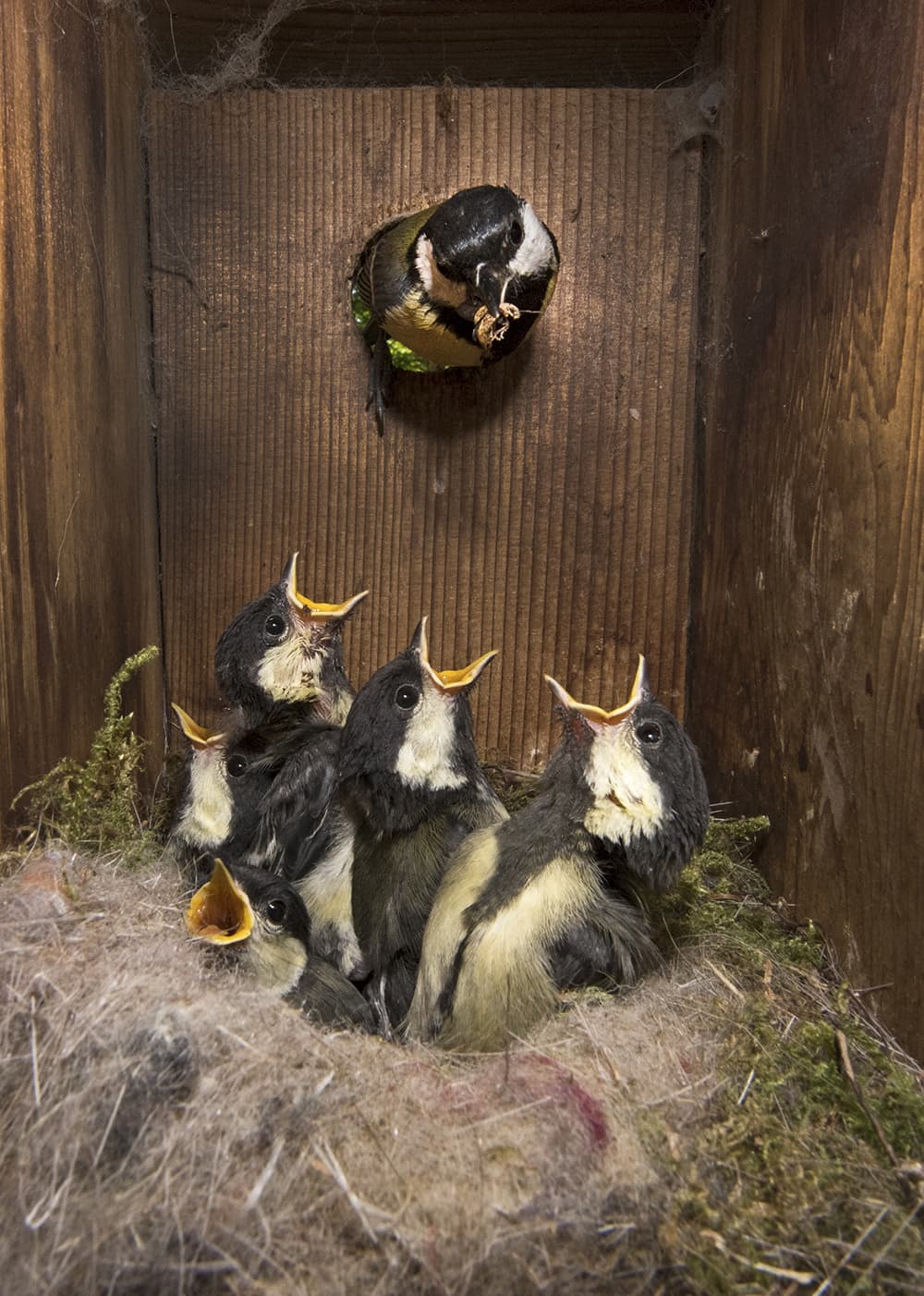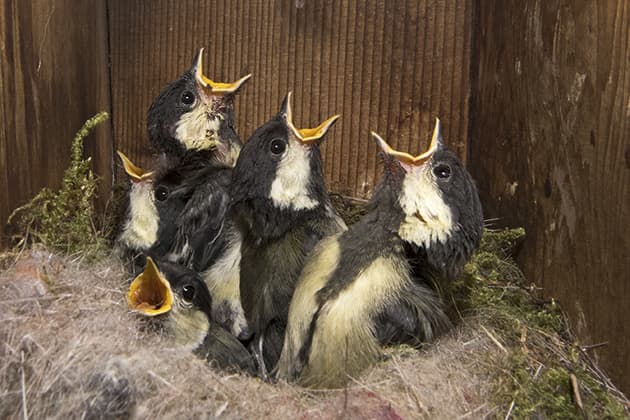
Part of my working year is spent photographing bird feeders and nest boxes for a long-standing client. It may seem mundane work when compared to jetting off to somewhere exotic on the trail of more sexy subjects, but it’s work that continually throws up challenges.
Around 10 years ago, I was asked to shoot some pictures of great or blue tits rearing their chicks inside one of my client’s nest boxes. I designed a camera box, which with the help of a carpenter was fixed to the back of the nest box. That was then fixed to a wooden frame so the whole thing was freestanding and could easily be moved. The nest box is segregated from the camera compartment internally by a sheet of glass that can be removed for photography.
Each spring, I have around a dozen nest boxes out in the woodland I use as my outdoor studio, all of which are normally occupied, so I expected it to work that first spring. It seemed dead certain that I would have the pictures for my client that summer.
How wrong I was! The birds never went near the box despite all other boxes being occupied. As the years rolled by, the occasional start of a nest – usually a few strands of moss – would appear in the nest chamber then nothing; the box remained empty.
Last year I had to move my whole outdoor studio to a new woodland, and at the last minute decided to take my now slowly rotting camera box with me. I plonked it between some holly bushes to keep it out of the way. This spring was a poor one for the great and blue tits using my boxes. A cold and wet late spring made it harder than usual for adults to find enough food for their chicks. On one of my rounds checking boxes I had a peek inside the camera box. To my surprise, sitting on a nest of moss was a great tit incubating five eggs. I did a little celebratory jig and punched the air. I was in business.
I already had an old discontinued Nikon D300 covered in cobwebs sitting at the back of the box, so the birds were used to having a camera pointing at them. I decided to use a Nikon D810 and a 14-24mm lens at 14mm for the shoot, fixed to a table tripod and placed on the floor of the box. The D810 with its large files would allow me to crop into the centre of the frame, thus eliminating the woodwork around the joint between nest box and camera box.
The challenge now was how to light the nest while not causing any undue stress to the birds. Once hatched, for the first few days the adults struggled to find enough food. Continual rain and cold was taking its toll, so each day I put out a dish of about 20 mealworms. At home in a darkened room and with a large cardboard box, I experimented with lighting options. I initially rigged up a lamp to illuminate the inside of the box, but this created nasty shadows. I wanted the lighting to be as soft and natural- looking as possible. I was also aware of the eye damage a flash pointed at the young birds might cause.
Perseverance pays off
I eventually settled on using a Nikon SB-R200 Speedlight flashgun that was controlled by an SU-800 controller. I fixed the flash with Blu-Tack to the lens hood of my 14-24mm lens and angled the flash up to the roof of the photo box, where I had a white card positioned to throw the reflected light towards the nest. This worked really well, and by balancing my exposure with the light outside I could ensure a hint of woodland could be visible through the entrance hole.
The only drawback now was not knowing what I was photographing each time a bird returned to feed the chicks. For my first two sessions I shot blind and got some fair shots, but I knew I might be missing interesting behaviour. I added a small lamp that provided enough light to get an image from a GoPro camera pointed at the nest. This picture was relayed to my iPad and I was able to sit a few metres away and fire the camera using a wireless trigger, whenever it looked interesting.
To keep disturbance down I visited every three days and took pictures for no more than two hours at a time. The birds accepted all the additional gear that appeared in the box and accepted me, often appearing just a metre or two away when I arrived with the mealworms.
After 10 years I finally had the pictures that I had planned for. All five chicks fledged successfully and, most important, my client was delighted by the results.
David Tipling is an award-winning wildlife photographer and has published multiple books on the subject. He has appeared on television several times, including shows such as the BBC’s The One Show and Springwatch. David is also a regular judge for many photography competitions. If you would like to see more visit www.davidtipling.com.







